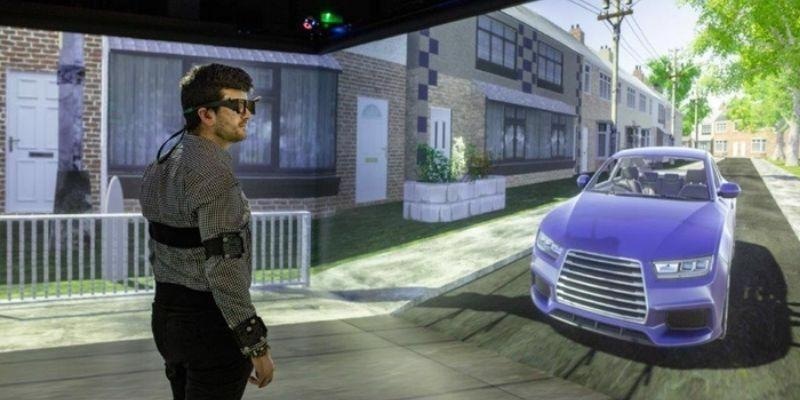
Image Credit: University of Leeds
The researchers are working to quantify a decision-making model called drift-diffusion that can predict the crossing of pedestrians on road, in front of approaching cars. Furthermore, they look to use this feature in scenarios where car gives way to pedestrians with or without signal.
This prediction ability will enable effective communication in autonomous vehicles, regarding pedestrians, in terms of their movement in traffic and any external signals such as flashing lights to maximize traffic flow and reduce uncertainty.
The drift-diffusion model predicts that people reach a decision after gathering sensory evidence up to the threshold at which the decision is taken.
It is exciting to see that these theories from cognitive neuroscience can be brought into this type of real-world context and find an applied use.
Gustav Markkula, Professor, Institute for Transport Studies, University of Leeds
“When making the decision to cross, pedestrians seem to be adding up lots of different sources of evidence, not only relating to the vehicle’s distance and speed, but also using communicative cues from the vehicle in terms of deceleration and headlight flashes,” added Markkula.
When a vehicle is giving way, pedestrians will often feel quite uncertain about whether the car is actually yielding, and will often end up waiting until the car has almost come to a full stop before starting to cross. Our model clearly shows this state of uncertainty borne out, meaning it can be used to help design how automated vehicles behave around pedestrians in order to limit uncertainty, which in turn can improve both traffic safety and traffic flow.
Gustav Markkula, Professor, Institute for Transport Studies, University of Leeds
“It is exciting to see that these theories from cognitive neuroscience can be brought into this type of real-world context and find an applied use,” commented Markkula.
Virtual Reality
For product testing, the team employed virtual reality and placed trial participants in different roads-crossing scenarios in the distinct Highly Immersive Kinematic Experimental Research (HIKER) simulation. The movement of the participants was tracked in high detail while moving freely inside a stereoscopic 3D virtual scene, which displays a road with oncoming vehicles. The participants were asked to cross the road as they felt it is safe to do.
The different scenes were tested, with a vehicle approaching at the same speed or decelerating to allow the pedestrians to cross, at times flashing the headlight, which is a common signal in the United Kingdom to gain pedestrian attention.
According to the model prediction, the researchers observed that participants were gathering information, over time, from the sensory data of vehicles regarding their speed, acceleration and communicative clues, to cross the road. This implied that the drift-diffusion model is capable of predicting when the pedestrians would likely cross the road.
Markkula said, “These findings can help provide a better understanding of human behaviour in traffic, which is needed both to improve traffic safety and to develop automated vehicles that can coexist with human road users. Safe and human-acceptable interaction with pedestrians is a major challenge for developers of automated vehicles, and a better understanding of how pedestrians behave will be key to enable this.”
Predicting pedestrian decisions and uncertainty can be used to optimise when, and how, the vehicle should decelerate and signal to communicate that it's safe to cross, saving time and effort for both.
Dr. Jami Pekkanen, Study Lead Author, University of Helsinki
Further Information
The research was financially supported by the European Union (Horizon 2020 project interACT) and by the Engineering and Physical Sciences Research Council.
The study authors include Jami Pekkanen, University of Helsinki (previously the University of Leeds); Oscar Giles, The Alan Turing Institute (previously the University of Leeds); Yee Mun Lee, University of Leeds; Ruth Madigan, University of Leeds; Tatsuru Daimon, Keio University; Natasha Merat, University of Leeds; Gustav Markkula, University of Leeds.
Journal Reference:
Pekkanen, J., et al. (2021) Variable-Drift Diffusion Models of Pedestrian Road-Crossing Decisions. Computational Brain & Behavior. doi.org/10.1007/s42113-021-00116-z.